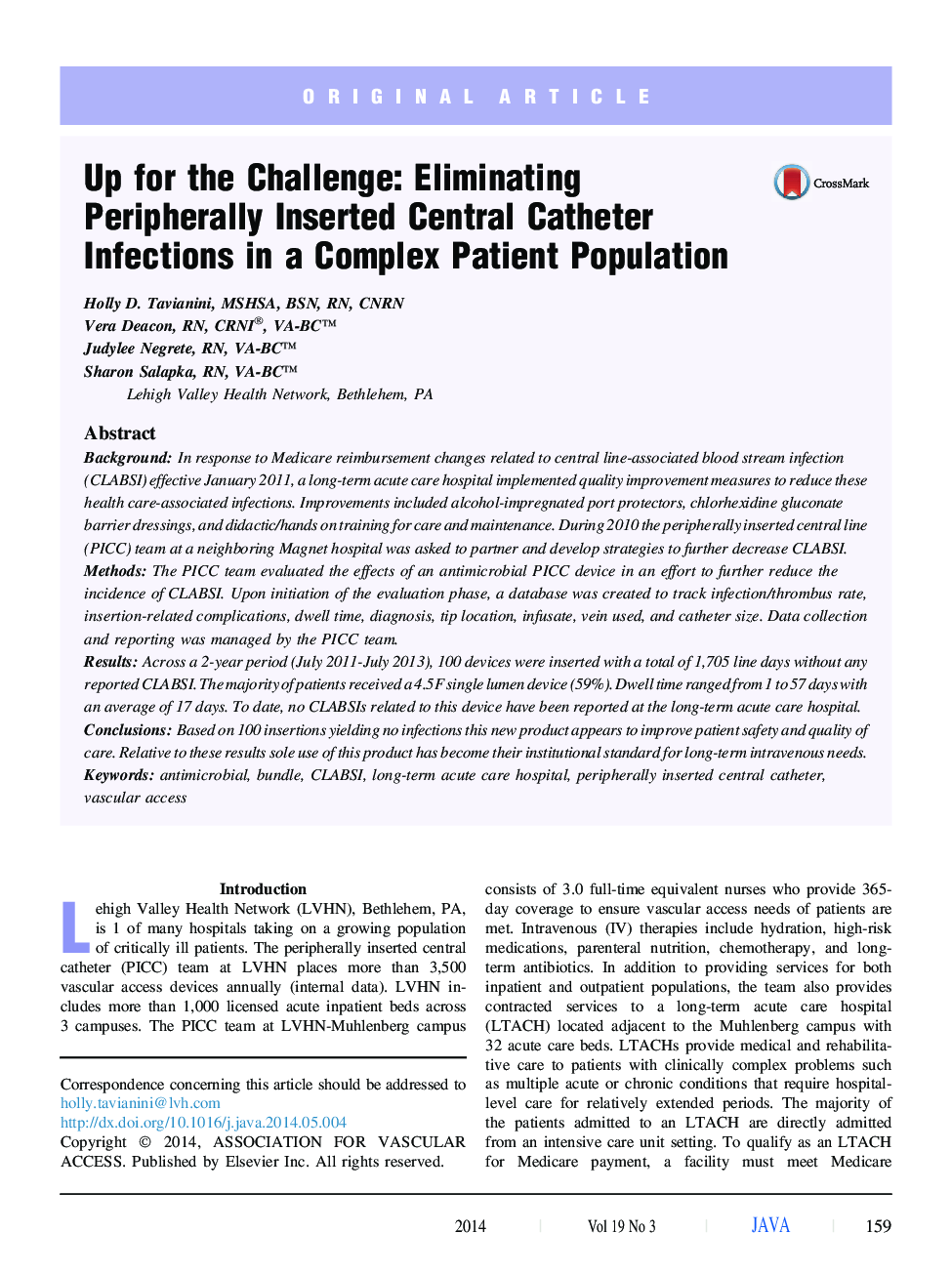| Article ID | Journal | Published Year | Pages | File Type |
|---|---|---|---|---|
| 2659267 | Journal of the Association for Vascular Access | 2014 | 6 Pages |
BackgroundIn response to Medicare reimbursement changes related to central line-associated blood stream infection (CLABSI) effective January 2011, a long-term acute care hospital implemented quality improvement measures to reduce these health care-associated infections. Improvements included alcohol-impregnated port protectors, chlorhexidine gluconate barrier dressings, and didactic/hands on training for care and maintenance. During 2010 the peripherally inserted central line (PICC) team at a neighboring Magnet hospital was asked to partner and develop strategies to further decrease CLABSI.MethodsThe PICC team evaluated the effects of an antimicrobial PICC device in an effort to further reduce the incidence of CLABSI. Upon initiation of the evaluation phase, a database was created to track infection/thrombus rate, insertion-related complications, dwell time, diagnosis, tip location, infusate, vein used, and catheter size. Data collection and reporting was managed by the PICC team.ResultsAcross a 2-year period (July 2011-July 2013), 100 devices were inserted with a total of 1,705 line days without any reported CLABSI. The majority of patients received a 4.5F single lumen device (59%). Dwell time ranged from 1 to 57 days with an average of 17 days. To date, no CLABSIs related to this device have been reported at the long-term acute care hospital.ConclusionsBased on 100 insertions yielding no infections this new product appears to improve patient safety and quality of care. Relative to these results sole use of this product has become their institutional standard for long-term intravenous needs.
